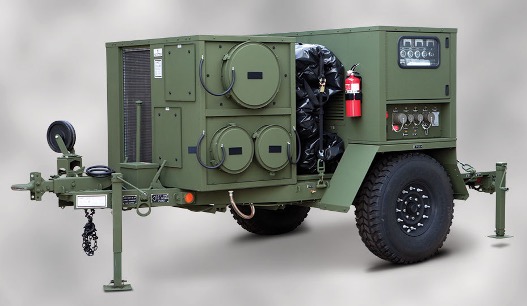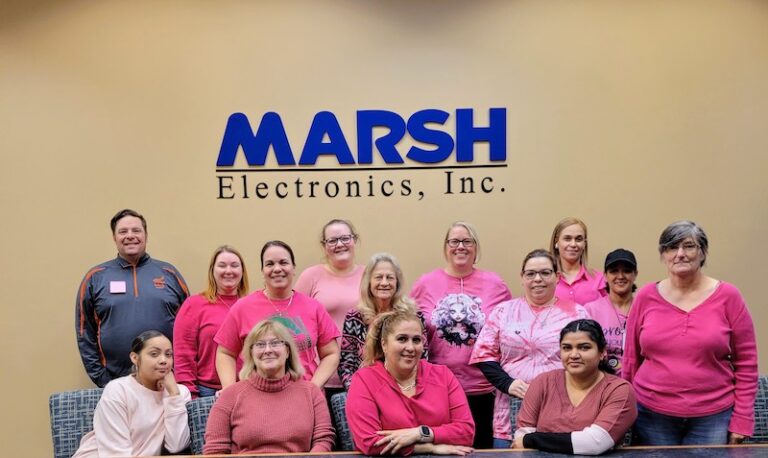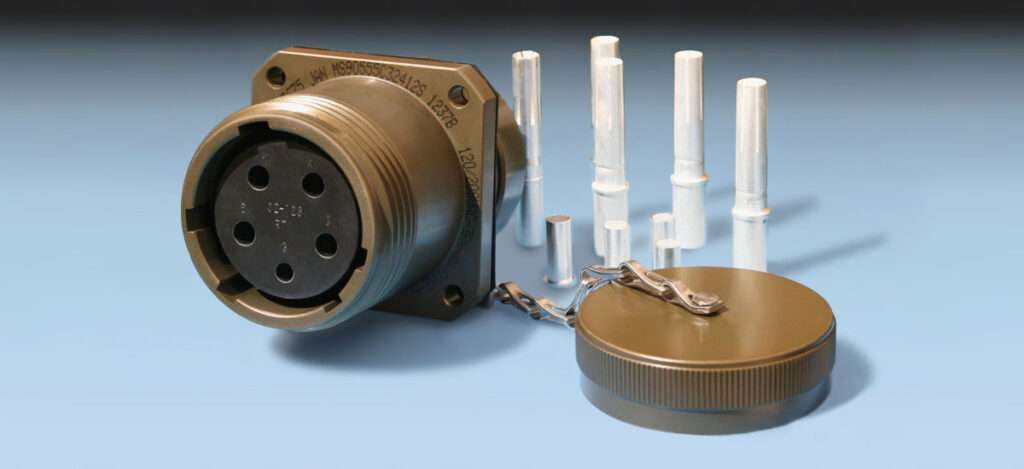Supply chain issues are the bane of manufacturers in just about every sector. This is no different in the high-reliability connector market for both defense and industrial/commercial use. The problem is further exacerbated by the fact that prints for legacy programs, especially on DoD equipment, tend to have significant age to them. Often the engineer that specified the connector on a legacy program is long retired, with little hope of changing the original drawings.
Major manufacturers of these connectors are quoting absurd lead times with high order quantities. Since these types of connectors are often found in relatively low-quantity, high-reliability programs, it becomes difficult to justify the purchase quantities. Many companies are forced to walk away from quoting on new and legacy programs due to lack of connector availability, long lead times, huge minimum quantities or simply unavailable connectors.
If you are one such company scrambling to source connectors in the MIL-DTL-22992 Class L or SAE-AS81703 Quick Disconnect series, all is not lost. One connector manufacturer is using their expertise, nimbleness and wide cross-reference database to fill that gap. Robert Technologies (RTI) has been a leading manufacturer of power and signal connectors for defense and commercial industries for over 35 years. For those years, they have been an important supplier to the industry, so nothing there has changed. What has changed is that RTI is now one of six brands within the Western Protective Solutions family of companies. As such, they are able to leverage the additional engineering, manufacturing and design prowess of this much larger group. The added horsepower gives them the ability to participate in large defense programs, and the industry is increasingly turning to them to develop solutions and fulfill orders.
Sourcing connectors on legacy prints has always been an issue, but RTI leverages its experience and design ability to provide alternatives. “We have customers coming to us with a lot of strange part numbers, particularly in the 81703 series,” said Josh Hoffman, Operations Manager/Sales at RTI. “But we have a huge knowledge base, and we are usually able to help people with finding the parts they need.”
Often, those parts can be supplied from RTI’s huge inventory. But more and more, they are determining suitable replacements with reasonable lead times. “My customers are telling me that major manufacturers are quoting them 30-to-36-week lead times, and we are quoting 8 to 10,” Josh revealed. He further explained that customers find RTI’s minimum quality purchase levels to be much more palatable than the big manufacturers.
As mentioned, RTI will also find suitable replacements for hard or impossible-to-find parts. “For example, we got some requests for an 06 and 07 (22992 Class L series) connector in a size 32. I’ve never even seen one of those, but I know it’s a single-phase version of the more popular three-phase connector,” Josh detailed. “We told them to use the three-phase connector and just don’t hook up a phase.” RTI was able to produce sealing plugs and the customer was able to meet delivery with a qualified connector at a reasonable cost.
Some connectors may have to be recreated from the ground up, and that’s not a problem either. “Often times it’s easier to produce them now because the materials are better,” Josh said. “For example, some of the things that were hard to mold in the past are actually better, and you can provide them with a replacement connector that actually exceeds their needs.”
Since these connectors are for high-reliability connections and can be quite complex, RTI has a detailed five-phase protocol they adhere to with new product development. In Phase 1, they do a needs assessment and market study. Phase 2 covers design and approval where the output is generally a print with a quote to the customer. Upon approval, they move to Phase 3 which is engineering design. Here they create an FMLA, produce a bill of materials, prototypes, and a pre-release design review. Phase 4 is where they define production equipment, flow control planning and first article approvals. The final stage, Phase 5, is volume production along with packaging and follow-up FMLAs. At this stage, they will also gain any agency approvals required.
It may sound like a long process, but RTI’s nimble approach allows them to do this at unparalleled speed. More importantly, it keeps customers’ quality and cost expectations in view at each step.
Case Studies
Most often, RTI’s strong design and execution ability allows their customers to win contracts valued in the many millions of dollars. Following are three instances where their quick execution was key to the success of the program for RTI and their Tier 1 and OEM customers.
Customer A (Tier 1 supplier)
Challenge: The customer’s original connector vendor fell short and could not deliver the order. The DLA was the ultimate customer, buying on behalf of the US government. They were about to cancel the order which was overdue by almost a year. It required 15,000 connectors for production to deliver over a 4-to-5-month timeframe.
Solution: RTI rapidly increased capacity through workforce efficiency, additional shifts of production and leveraging its supply chain.
Outcome: The Tier 1 customer was able to recover and meet the revised delivery date.
Customer B (OEM)
Challenge: The RTI customer was supplying a trailer generator for the US military (Figure 1). In the field, soldiers were forgetting to unplug the trailer from the Humvee after unhitching. They were driving off, causing untold damage to the equipment. They needed a connector that would disengage if not properly detached.

Solution: The design team engineered and qualified a lanyard disconnect with a tether going back to the trailer to solve the problem. The product shipped within 60 days.
Outcome: The customer was awarded additional contract years as well as reducing in costs due to negligence in the field.
Customer C (OEM)
Challenge: A Microgrid project required an environmentally sealed connector, but without the backshell in order to reduce weight. The new connector thus required reengineered ground continuity as well.
Solution: The design team engineered an alternative grounding system for the connector allowing the backshell to be replaced with a dual-shot overmold achieving the required weight reduction on a connector that had been around for approximately 30 years. RTI was awarded a US Patent on this innovative solution.
Outcome: The customer was awarded a five-year program, and RTI delivered to schedule with zero quality issues.






























































